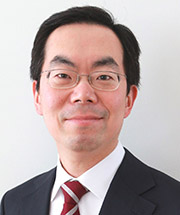Property rights 'laws' historically manipulated by businesses, research finds

LAWRENCE — Within most countries, businesses operate under the notion that their property rights are stable. A set of operational rules and a political system that protects those rules are firmly entrenched, right?
Not necessarily.

“According to organization and management theory, mostly we assume the external environment — such as a political, economic and social one that we collectively call the institutional environment — is a given,” said Jun Ho Lee, assistant professor of strategy and international business at the University of Kansas School of Business.
“Even in daily life we usually say, ‘It is what it is.’ In this paper, we challenge that conventional wisdom.”
His article titled “The Endogenous Creation of a Property Rights Regime: A Historical Approach to Firm Strategy and Governance Structure” argues that private firms can manipulate this institutional environment by legitimizing an existing one that protects their property rights or by delegitimizing another that threatens their property rights. It appears in the Academy of Management Perspectives.
Co-written by Minyoung Kim, the Frank T. Stockton Professor of Strategic Management at KU, and Marcelo Bucheli of the University of Illinois, the paper observes both recent and historic periods when the institutional environment was affected through political struggles. In such struggles, social actors such as states and firms determined how property rights were defined, allocated, delineated and enforced.
“If you look back at the history of the United States, you can look at the collusion of the so-called 'robber barons' — Andrew Carnegie, John D. Rockefeller and J.P. Morgan — in the election of American president William McKinley,” Lee said.
His article notes how after these magnates created huge business empires through aggressive processes of vertical and horizontal integrations, they came together to provide generous funding to Republican candidate McKinley’s 1896 presidential campaign against Democrat William Jennings Bryan, who campaigned with a platform against the big “trusts” in transportation, energy and finance. Bryan’s defeat was followed by the “great merger movement,” in which large firms consolidated into even larger giants without being challenged by antitrust legislation.
“This shows how private firms could advance certain types of governance structures after ensuring the consolidation of a particular property rights regime,” Lee said.
Private actors can also play an important role in promoting changes in the institutional environment to delegitimize the property rights and institutional arrangements of other private actors.
“A similar argument was used in South Africa, but this time to support the expropriation of domestic property owned by ethnic white people,” Lee said.
After Nelson Mandela’s release from jail in 1990, some members of the African National Congress’ radical wing argued that contracts signed under apartheid should be declared void because they had been enacted under a racist, undemocratic regime. Those advocating this point were defeated by Mandela’s wing, which supported the 1990 Groote Schuur agreement that the African National Congress signed with the last apartheid president, Frederik de Klerk, committing to keeping the bases of the economic system intact.
Lee and his team arrived at their research conclusions by conducting comprehensive historical analyses.
“The history behind a particular regime, as well as the degree of contestability and stability it enjoys, can provide us with strong analytical tools to understand why property rights are more secure in some regimes than in others,” Lee said.
He said he believed this paper offers strong evidence that any type of institutional environment can be changed by an organization in some way.
“Extending our theory about a firm’s role in endogenous creation and change of institutional environments, we hope to offer the implication of corporate activities for creating a positive and sustainable institutional environment,” Lee said.
“We can do much more proactively, not just to simply say, ‘It is what it is.’”
Top photo: iStock